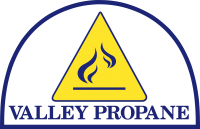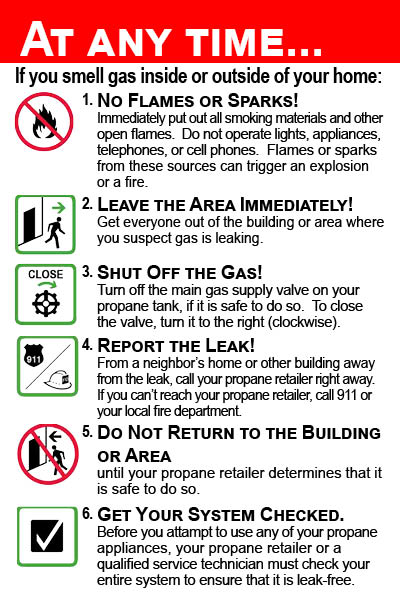High levels of CO can make you dizzy, give you headaches, or cause flu-like symptoms. In extreme cases high levels of, or extended exposure to, CO can result in brain damage or death. Young children; the elderly; people with heart disease; and those under the influence of alcohol, drugs, or medication are particularly susceptible to CO poisoning.
Symptoms of CO poisoning include:
- Headache
- Dizziness
- Shortness of Breath
- Nausea
- Fatigue
If you or a family member are showing physical symptoms of carbon monoxide poisoning, or you suspect that carbon monoxide is present, get everyone out of the building and CALL 911 OR YOUR LOCAL FIRE DEPARTMENT. If it is safe to do so, open windows to allow entry of fresh air, and turn off any appliances you suspect may be releasing the carbon monoxide.
How can I reduce the risk of Carbon Monoxide Poisoning?The best way to reduce the risk of carbon monoxide poisoning is to have a qualified service technician check your appliances and venting systems annually, preferably before the heating season begins.
Other important measures include:
- Keep chimneys, flues, and vents free of debris such as leaves and animal nests.
- Keep chimneys, flues, and vents free of snow and ice.
- Consider installing a UL-listed carbon monoxide detector on every level of your home.
- Never use a gas oven or range-top burners to provide space heating.
- Never use portable heaters indoors, unless they are designed and approved for indoor use.
- Never use a barbecue grill (propane or charcoal) indoors for cooking or heating.
- Regularly check your appliance exhaust vents for blockage.
- Always open the chimney flue damper when you use your fireplace.
- Always follow the manufacturer’s instructions for placement and use of vent-free appliances, including fireplaces and logs.
- Never run an internal combustion engine such as your car, lawn mower, generator, or snow blower in enclosed areas such as your garage.
Carbon monoxide detectors are designed to sound an alarm when they sense excessive levels of carbon monoxide in the air. For an extra measure of safety, we recommend that you consider installing a UL-listed carbon monoxide detector on each level of your home. Be sure to follow the manufacturer’s instructions regarding installation, location, and maintenance.
What are some things that can lead to Carbon Monoxide?There are some early warning signs that can be found around your home that can lead to or signal the presence of Carbon Monoxide in your home:
- Sooting, especially on appliances, vents, and warm air registers
- Unfamiliar or burning odor
- Increased moisture inside of windows
If you notice any of these signs, call your provider right away to get your system inspected and repaired.

